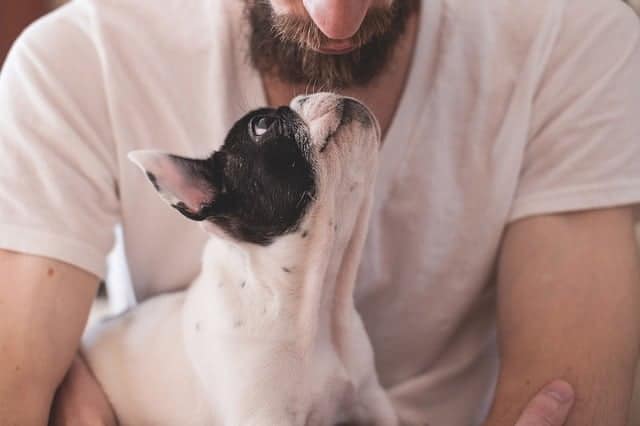
When a dog looks at us, it tries to understand our feelings and responds accordingly. And our four-legged friends often understand us more than we think.
Eye contact with your dog is much more than just a sensory experience. In fact, everyone agrees that the dog’s gaze is full of feelings, love and good intentions, often saying the phrase: “My dog speaks to me with their eyes.” What do dogs feel when they look at us?
This expression is much more scientifically based than you might think. The look that a dog turns to its owner contains many secrets, but above all it is full of empathy.
The importance of communication between living beings
The recognition of emotions allows animals to evaluate the intentions and motivations of the living beings around them, in order to respond appropriately and anticipate events.
This allows you to maintain long-term relationships and avoid confrontational encounters that do not benefit any of the members of the interaction. So, in addition to mere altruism, animal empathy has enormous adaptive value.
The ability to recognize and respond adequately to stimuli increases the suitability, and therefore also the degree of survival, of both the sender and recipient.
All this is valid for the specimens of the same species, but also if the communication takes place between specimens belonging to other genera and orders. Naturally, the dog has learned to identify the expressions of the human being, because, after centuries of domestication, their life literally depends on correct communication with them.
What do dogs feel when they look at us?
When a dog stares intently at his owner, he is trying to understand his feelings. A scientific study sought to quantify the effectiveness of this relationship. During the test:
- 17 dogs were exposed to two sensory stimuli of human origin. One of them was a face (happy or angry) and another a sound that expressed anger or pleasure. These parameters were mixed in various tests.
- The tests were repeated several times for each of the dogs, monitoring the variables and trying to identify preferences.
The results highlight a very important fact: dogs understand human emotions not only by looking at the face, but also by interpreting the sounds we make with it.
This is evidenced by the fact that nearly 70% of dogs paid more attention to faces that featured vocalizations congruent with facial expression (happy sound with a happy face, for example).
The level of canine understanding and intelligence is so high that some scientists claim that this ability is comparable to that of a two-year-old child.
For example, a dog understands perfectly that licking makes the owner feel good, so it classifies it as a positive stimulus to provide in times of difficulty and stress. It is no coincidence that dogs show affection when they see someone cry, because they obviously understand the situation.
Beyond the interpretation
When a dog looks at their owner’s face, they not only understands their emotions, but captures them. Stress, for example, is a feeling that the dog makes their own when it observes their in their familiar environment.
In addition to perfectly distinguishing human tones and mood swings, dogs are able to metabolize the hormones we produce when we are in danger, when we are afraid and feel anxiety through the sense of smell. This, in many cases, also generates negative responses in the animal.
Empathy is the key to living together

As we have seen in these lines, when a dog looks at you, in most cases it tries to understand you. As is normal, visual communication also responds to other needs. For example, the dog may also try to express some need or discomfort.
Beyond understanding, our emotions also affect the well-being of the pets around us. Dogs are able to understand stress and fear, but in addition to metabolizing these emotions, they become infected with them and feel them on their skin.
It is natural to go through difficult times in life, so we are not saying that an owner should hide their emotions from their pet. On the contrary, it is in these moments that you will need their love and affection the most.
In any case, avoiding yelling or making loud noises in the house despite the stress will do both you and your pet good.






